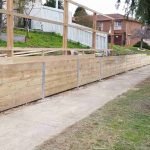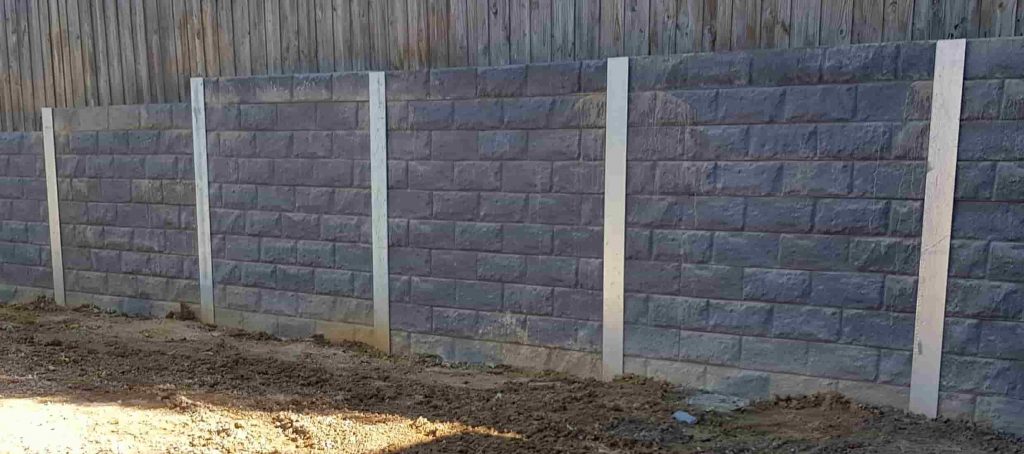Introduction
When it concerns landscaping and construction, one of the most vital elements to consider is the type of soil on your residential or commercial property. Understanding soil types with your retaining wall installer's help can make a substantial difference in making sure the stability and durability of your retaining wall. Maintaining walls serve not just as visual improvements but likewise play a crucial role in handling soil disintegration and supplying support in sloped locations. This guide will dive deep into the intricacies of soil types, their attributes, and how they engage with various products like timber sleepers, concrete sleepers, and H beams
Understanding Soil Types with Your Retaining Wall Installer's Help
What Are Soil Types?
Soil types are classified based upon their physical and chemical residential or commercial properties. They can be broadly classified into sandy, clayey, silty, fertile, and peaty soils. Each type has its own unique attributes that impact drainage, compaction, and overall stability.
Why Is Soil Type Crucial for Maintaining Walls?
The kind of soil directly impacts the design and installation of keeping walls:
- Drainage: Some soils retain water while others enable it to drain quickly. Weight: Various soil types have differing weights that can exert pressures on the retaining wall. Erosion: The vulnerability to erosion varies with each soil type.
Common Soil Types Explained
Sandy Soil
Sandy soil consists of big particles that develop big spaces between them. It drains rapidly but may not hold nutrients well.
Pros:
- Excellent drainage Easy to work with
Cons:
- Low nutrient retention Susceptible to erosion
Clayey Soil
Clayey soil consists of trusted services for retaining walls really great particles that are firmly compacted. It retains water but drains pipes poorly.
Pros:
- High nutrient retention Good for particular plant growth
Cons:
- Poor drainage Can expand or diminish significantly with moisture changes
Silty Soil
Silty soil is made up of medium-sized particles that are smooth to the touch. It holds moisture much better than sandy soil but drains pipes poorly.
Pros:
- Good nutrient retention Holds moisture well
Cons:
- Compacts easily Susceptible to disintegration when wet
Loamy Soil
Loamy soil is a mix of sand, silt, and clay. It is often thought about the perfect garden soil due to its balance of drain and nutrient retention.
Pros:
- Excellent drain Nutrient-rich
Cons:
- Can be costly if acquired
Peaty Soil
Peaty soil consists of a great deal of organic matter, making it dark in color. It's usually found in wet areas.
Pros:
- Rich in nutrients Great for particular plants
Cons:
- Poor drainage Can be acidic
Choosing the Right Product for Your Retaining Wall
Timber Sleepers vs. Concrete Sleepers
When building a retaining wall, you have a couple of material choices - timber sleepers or concrete sleepers Each has its benefits depending upon your particular needs.
Timber Sleepers
Timber sleepers offer a natural look that blends well with gardens.
Advantages:
Aesthetic appeal. Easier to deal with throughout installation. Cost-effective option.Disadvantages:
Prone to rot over time. May require more maintenance.Concrete Sleepers
Concrete sleepers supply durability and strength for larger walls or walls built on unsteady soil conditions.
Advantages:
Long-lasting. Requires less maintenance. Suitable for numerous designs.Disadvantages:
More costly than timber. Heavier, requiring more labor during installation.H Beams as Structural Support
For vertical loads or additional structural support in your retaining wall system, using H beams can be beneficial.
Benefits of H Beams:
Provide additional strength against lateral earth pressure. Ideal for high slopes where additional support is necessary. Versatile usage in conjunction with both lumber or concrete systems.Soil Analysis Before Installation
Why Conduct a Soil Test?
Conducting a soil test before installing your retaining wall is vital since it helps identify:
Soil composition (sand, silt, clay). pH levels impacting plant growth. Drainage abilities which affect wall design.How to Conduct a Soil Test?
You can either hire professionals or do it yourself:
Collect samples from several locations at different depths. Use an at-home kit or send out samples to a lab for detailed analysis. Review results thoroughly; consult your installer for analysis related to building and construction plans.The Role of Your Retaining Wall Installer
Choosing a Professional Installer
Hiring a professional installer makes sure that all aspects-- from soil testing to wall building and construction-- are handled expertly.
What Makes an Installer 'Professional'?
Experience in numerous kinds of installations (timber sleeper vs concrete sleeper). Knowledgeable about local guidelines and developing codes. Strong portfolio showcasing previous projects.Questions to Ask Your Installer
Before dedicating:
What is your experience with different soil types? Can you supply references? What products do you suggest based upon my particular situation?Design Considerations Based upon Soil Type
Factors Influencing Style Choices
When designing your retaining wall, think about these factors based on your specific soil type:
1. Height & & Load Bearing Capacity
Taller walls need sturdier products like concrete sleepers or H beams for structural integrity in clayey soils susceptible to expansion under wetness changes.
2. Drain Solutions
Including perforated pipelines behind the wall can help manage water pooling behind walls built on sandy soils where quick drain is possible but requires careful planning around stability issues related to heavy rains affecting loamy soils too!
Construction Process Overview
Steps Associated with Structure a Retaining Wall
Building any sort of retaining wall consists of several actions:
1. Initial Consultation

2. Website Preparation
Clear location & & guarantee appropriate grading towards drain outlets; mark out borders accurately before digging begins!
3. Foundation Laying
A solid structure supports lasting performance-- particularly important when utilizing much heavier materials like H beams!

4. Wall Construction
Set up picked product (timber/concrete) according to develop specs; include necessary supports if needed!
5. Final Touches
Add any complements preferred-- like caps atop concrete walls! Do not forget landscaping around base either!
FAQs about Retaining Walls and Soil Types
Q1: How do I understand what kind of soil I have?
A1: A professional service can conduct a comprehensive analysis; additionally, do it yourself packages are available online for standard testing!
Q2: Can I install my own retaining wall?
A2: While possible if experienced enough-- working with experts frequently conserves headaches later down roadway by guaranteeing whatever fulfills regional codes!
Q3: For how long will my retaining wall last?
A3: Depends heavily on products used; wood may last 10-- 20 years while concrete could last over 50 years if correctly maintained!
Q4: What takes place if my wall collapses?
A4: Routine assessments assist identify early indication before collapse happens; seek advice from engineers right away upon seeing any shifts/sinking!
Q5: Is vegetation valuable near keeping walls?
A5: Yes! Specific plants can support surrounding earth while also boosting looks however need to select carefully based upon root depth & & spreading tendencies!
Q6: Do I need permits before building?
A6: Typically yes-- but inspect regional regulations first because requirements vary extensively throughout towns concerning height/location limitations and so on!
Conclusion
In summary, understanding numerous elements associated specifically towards "Comprehending Soil Types With Your Retaining Wall Installer's Assistance" plays an integral function when launching this journey! From understanding how various materials carry out versus unique ground conditions through examining underlying earth composition prior interesting specialists-- each element contributes towards achieving successful outcomes! Ultimately investing time upfront pays off down roadway yielding visually pleasing yet structurally sound services customized exactly according respective website challenges experienced throughout procedure ahead!